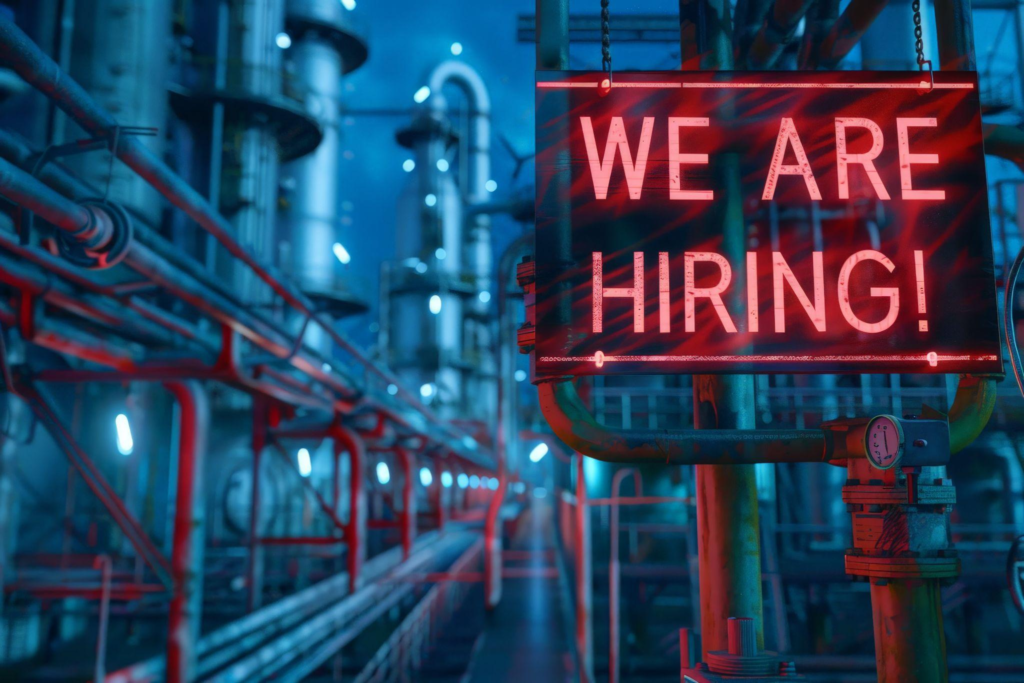
The industrial sector presents unique challenges and opportunities when it comes to talent acquisition and workforce management. From manufacturing and warehousing to construction and logistics, finding and retaining the right personnel requires a strategic approach that differs significantly from hiring in other sectors.
Table of Contents
Understanding the Current Industrial Labor Market
The industrial labor market has undergone significant transformation in recent years. Automation, digitalization, and evolving skill requirements have reshaped the workforce landscape. Companies must navigate a shrinking pool of skilled trade workers due to retirement, increased competition for technically proficient employees, growing demand for workers who can operate advanced machinery, and the need to balance automation with human workforce requirements. It is often best to hire an industrial recruiter but if you prefer ot try yourself, read on.
Key Positions in Modern Industrial Settings
Today’s industrial operations require a diverse workforce spanning multiple skill levels and specializations. Technical roles include machine operators, maintenance technicians, quality control specialists, process engineers, automation technicians, and industrial electricians. Supporting these technical positions are essential roles such as warehouse personnel, material handlers, logistics coordinators, safety officers, and production supervisors.
Essential Hiring Considerations
Skills Assessment and Requirements
Modern industrial positions demand a combination of traditional and emerging skills. Technical proficiency with specific machinery or equipment forms the foundation, complemented by understanding of safety protocols and regulations. Basic digital literacy has become increasingly crucial, as has the ability to work with computerized systems. Problem-solving capabilities and adaptability to new technologies are essential, along with physical capabilities for roles requiring manual labor and strong communication skills for team-based environments.
Compliance and Safety
Industrial hiring must prioritize workplace safety and regulatory compliance. This includes verifying necessary certifications and licenses, ensuring candidates understand and commit to safety protocols, screening for substance abuse according to industry standards, confirming physical capability for required tasks, and checking driving records for positions involving vehicle operation.
Building an Effective Hiring Process
Pre-screening
A robust pre-screening process should evaluate certifications, licenses, basic skills, safety awareness, and physical capabilities. This phase typically includes drug screening protocols and background checks to ensure candidate suitability.
Interview Process
Structured interviews should evaluate both technical and soft skills through technical knowledge assessment, hands-on demonstrations where applicable, and behavioral questions focusing on safety and teamwork. Scenario-based questions help evaluate problem-solving abilities, while team interviews with supervisors provide insight into cultural fit.
Essential Recruitment Channels
Modern industrial hiring requires a strategic mix of traditional and contemporary recruitment methods:
- Traditional Channels
- Trade schools and vocational programs
- Industry-specific job boards
- Local workforce development agencies
- Trade unions and professional associations
- Employee referral programs
- Digital and Modern Approaches
- Social media recruitment
- Mobile-friendly application processes
- Virtual job fairs
- Technical college partnerships
- Apprenticeship programs
Retention Strategies
Competitive Compensation
Success in industrial hiring extends beyond initial placement. Companies must complete regular market analysis of wages and benefits, implement performance-based incentives, and consider shift differential pay when applicable. Health and safety bonuses and skills-based pay increases help retain valuable employees.
Career Development
Organizations should provide clear advancement pathways and cross-training opportunities. Supporting certification programs, leadership development, and mentorship initiatives demonstrates commitment to employee growth and helps maintain a skilled workforce.
Work Environment
Creating an attractive work environment means establishing a strong safety culture, maintaining modern equipment and facilities, implementing regular maintenance schedules, and considering ergonomic factors. Team-building activities help foster a collaborative atmosphere.
Common Challenges and Solutions
Skills Gap
Finding candidates with the right technical skills remains a persistent challenge. Companies can address this through internal apprenticeship programs, partnerships with technical schools, internal training programs, and considering candidates with transferable skills from related industries.
High Turnover
Maintaining workforce stability requires attention to competitive compensation packages, clear career advancement opportunities, regular feedback and recognition, and improved work-life balance initiatives.
Technological Evolution
Keeping the workforce current with technological advances demands ongoing training programs, technology adoption incentives, regular skills assessments, and strong partnerships with equipment vendors.
Future Considerations
The industrial hiring landscape continues to evolve with the impact of automation and AI, growing importance of digital skills, and emphasis on sustainable practices. Changes in safety regulations and workforce demographics will shape future hiring needs and strategies.
Measuring Success
Effective industrial hiring requires tracking key metrics including time-to-hire, cost-per-hire, retention rates, and safety incident rates. Regular analysis of these metrics helps organizations refine their hiring processes and maintain a competitive edge in attracting and retaining top industrial talent.
Success in industrial hiring requires a comprehensive approach that addresses immediate staffing needs while building a foundation for long-term workforce stability. Organizations that invest in structured hiring processes, prioritize safety and compliance, and maintain competitive compensation and development opportunities will be best positioned to meet the challenges of modern industrial operations.

